The dandelion, although often considered a weed, is a beautiful bright yellow flower.
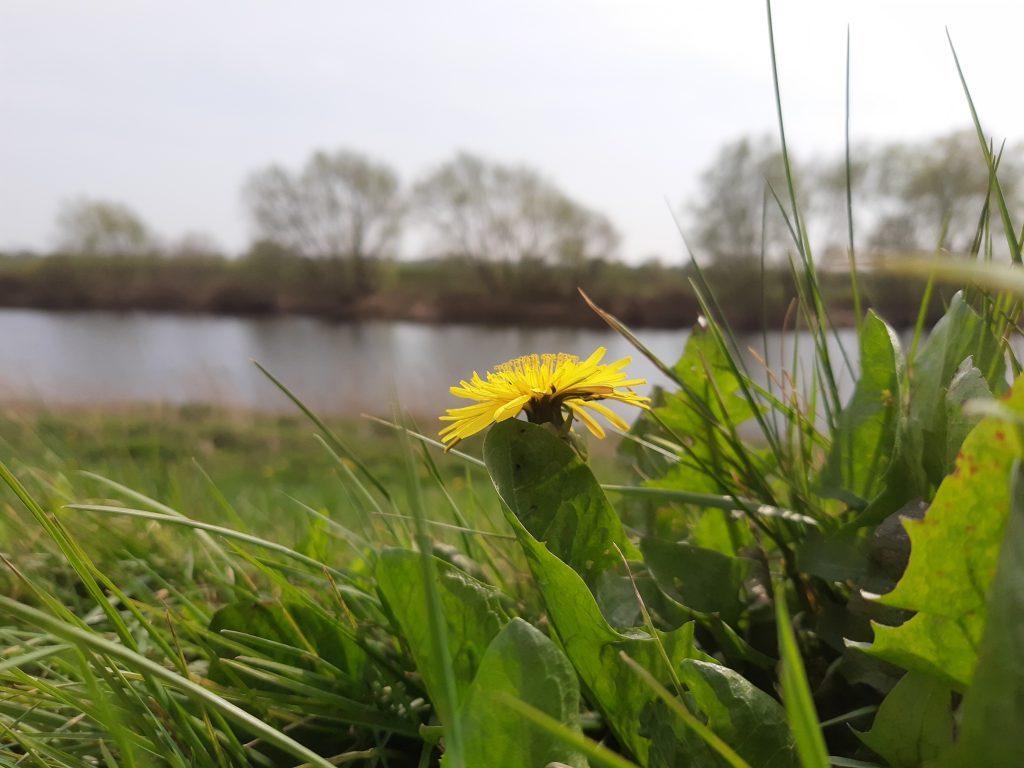
In nature when walking through fields and along paths beside rivers you can often see specks of yellow amongst the luscious green grass. These yellow speckles are usually dandelions, and in our opinion they add to the beauty of nature. Dandelions are easily recognisable by their bright and vibrant petals.
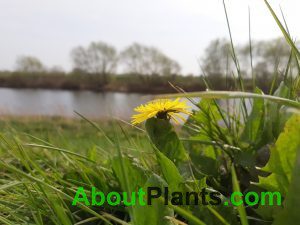
Controlling Dandelions
Some people think that dandelions are troublesome but they are actually easy to control around your home. In gardens they can be removed manually or by using weed killers which can be applied to the lawn. We do not recommend the use of chemical weed killers that contain ingredients that may be harmful to other wildlife as well as yourself and your family. There are some weed killers that contain natural ingredients, which target specific weeds. Some natural weed killers may not be as effective as others but still should be trialled before you attempt any other means. Ultimately, we still prefer weed control to be done manually where it can be and when your time allows. By manually removing weeds, which can be done with specific tools designed for the job or even small crowbars or larger flat head screwdrivers, you are maintaining your garden in an efficient way that keeps weeds at bay.
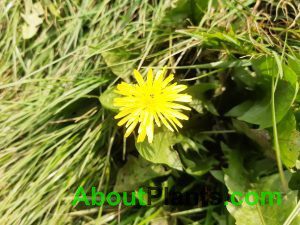
General Weed Control for Dandelions
We recommend after removing weeds, your grass is cut but not collected. Instead of collecting grass cuttings each time, on a periodic basis, for example every fourth time the grass is mowed, try going back over the area again and mulch the grass that has just been cut into the grass beneath it. This may mean that your lawn has areas of slightly browned layers as the freshly cut grass withers, but this process may allow nutrients that would otherwise have been removed be replenished back into the garden. Using mulched grass as an additional layer may in some circumstances help to prevent moss growth underneath the upper surface of your lawn.
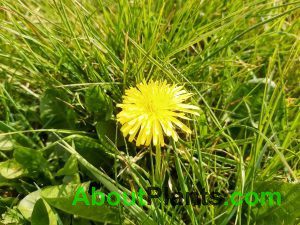
Decorative Application of Dandelions
Dandelions may be cut and tied together to create a small and freely available bouquet for table decorations (do not mix with food) and other arrangements. Although not traditionally considered a flower for making arrangements from, dandelions do look beautiful. The dandelion has a stem with a hollow centre and this hollow centre often contains a residue of nutrients that the flower uses for growth. When split, the inside of the stem may have a slightly milky appearance. Dandelions create nectar and this is useful for insects including honeybees.
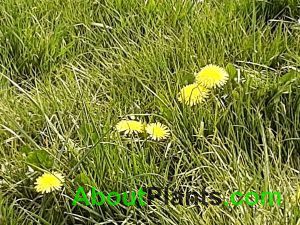
Unwanted Weeds
Dandelions are persistent weeds and they are perennial. They will grow in lawns and around the edges such as borders. They often grow near fences and hedges because the fence or hedge has acted as a collector of dandelion seeds that have blown around the garden and the seeds have been fallen to the bottom of the fence/hedge. Dandelions are found throughout the United Kingdom, in many parts of Europe and in some US states. Dandelions have been used for many centuries in salads and drinks. The leaves are sometimes made into salads after they have been blanched in boiling water. The flowers, stems and leaves are not used in any routine food or drink preparation. Never make any food or drink from weeds unless you are completely sure that it is safe to do so and you have sought expert advice beforehand. The leaves of a dandelion sprouts in a circular shape. The leaves are basal leaves, with deeply serrated edges and they shoot outwards in a spray from a single sprout which has got a long and relatively thick root. The root tends to have many smaller roots sprouting from the main branch of the root. The root can have a pink/red tinge to its color. Dandelion flowers can be very small especially when they are first germinating but can grow up to 5 to 6 cm (which is over 2 inches) in diameter. The seed head is often referred to as a ‘clock’. Over time, people have been known to blow the seeds whilst counting the number of blows that it takes to remove all the seeds from the dandelion flower’s centre. The total number of blows that it takes to remove all seeds is in folk law said to be reflective of the time. Obviously, in reality, this does not denote any particular time but it is very popular amongst children and you can use this as a good educational tool when describing how seeds are spread and why new dandelions appear each year. Dandelion stems grow and flowers appear mainly in the spring and summer time but flowers can still often be seen towards the end of the year, in September, October and even November in the UK. Flowers rarely appear as late as November, other than when summers have been prolonged or there has been increased heat towards the end of the year (sometimes referred to as an Indian summer).
Dandelions Growing on Hard Surfaces and Between Paving Slabs
As well as growing in lawns, dandelions often grow on hard surfaces and between paving flags. A good way to remove dandelions from between paving slabs is using a thin tool or a scraper specifically designed to remove weeds from between flags. These can be purchased from garden centres, DIY stores or online retailers. Natural ways of killing dandelions can be used. This includes, but is not limited to the use of vinegar. A diluted vinegar solution with the addition of a safe washing up liquid (which increases the solution’s surface tension, thus adhering it to the weed) can often be all that’s needed to help maintain weeds growing between paving flags. There are many weed killers on the market if this method does not control weeds satisfactorily. Those with harsh and potentially harmful chemicals should be avoided where possible though. If water courses (e.g. streams) run through or nearby the treated area, always use products that are safe to aquatic life.
Why are Weeds so Abundant?
Dandelions will tend to grow in acidic, neutral and alkaline soils. Many weeds do not require a specific PH of soil unlike some plants, trees and shrubs. This can often mean that it is very difficult to control weeds including dandelions. However, we are nature-loving individuals and think that one or two dandelions around the garden is not a bad thing. If you want to ensure that they do not spread, keep an eye out for dandelions and remove them manually the moment you see them growing. If this is done promptly, the spread of seeds is limited. Only the spread of seeds once the flower has morphed into a spherical ‘seed globe’ causes dandelions to multiply. More dandelions grow following the deposition of seeds on a surface that has enough moisture and nutrients to support their germination.
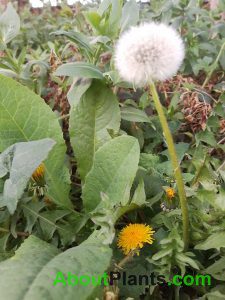
Dandelion Seeds from Neighbouring Properties
Obviously if neighbours do not take similar action to you (if you decide to follow the suggestions above), seeds from dandelions on a neighbour’s property may be blown onto your garden. If you are particularly concerned about the weeds in your garden and the neighbours gardens have many dandelions it may be advantageous to discuss your concerns and perhaps help the neighbours by removing dandelions if they are not able to themselves. Most people are amicable and do not act because they do not perceive the weeds as being a problem, do not have time, or are unable to deal with them for another reason.
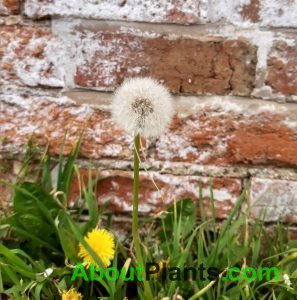
The Latin name for a dandelion is taraxacum officinalis.
This Article and AboutPlants.com
We hope you have enjoyed reading this article about dandelions. Please see our other information about weeds and how to keep your lawn and soil beds under control. We have many articles about plants, shrubs, trees, soil and garden tools on the AboutPlants.com website. If interested, take some time to read the other information on this website. If you have any comments about this dandelion article or any other, please get in touch with us. We are also keen to hear from people who are able to submit articles about their favourite plants, shrubs and trees. Get in touch if this is something that you would like to do. The aim of AboutPlants.com is to be the gardener’s encyclopedia of plants with useful tips, suggestions and views in addition to essential information about the correct care of our environment.
